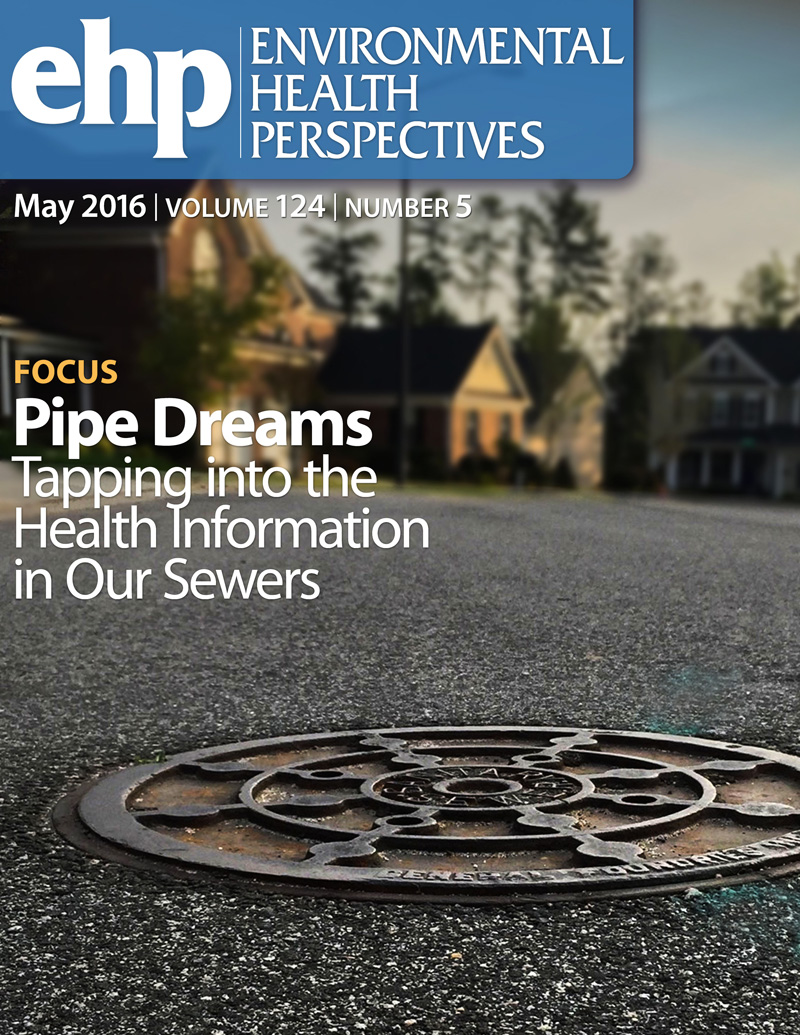Evaluating Metabolic Signatures in the Serum of South Korean Patients with Humidifier Disinfectant-Associated Lung Injury Identified through Untargeted Metabolomics.
IF 9.8
1区 环境科学与生态学
Q1 ENVIRONMENTAL SCIENCES
引用次数: 0
Abstract
BACKGROUND The South Korean humidifier disinfectant-associated lung injury case was one of the worst disasters involving household chemical products, resulting in over 5,800 casualties. Despite the strong association between lung injury and humidifier disinfectants, the underlying pathogenic mechanisms remain unclear. OBJECTIVES We investigated patients with humidifier disinfectant-associated lung injury to identify key metabolic signatures, aiming to gain insights into the underlying pathogenic mechanisms based on the characteristics of these metabolites. METHODS We employed untargeted metabolomics to assess the differential enrichment of plasma metabolites in 80 South Korean children with lung injuries caused by exposure to humidifier disinfectant containing polyhexamethylene guanidine. The key metabolites identified were subsequently validated in an independent cohort of 132 South Korean adults. RESULTS In the plasma of patients with humidifier disinfectant-associated lung injuries, we observed significantly higher levels of oxidized lipids compared to healthy controls, with these levels negatively correlating with lung function. These metabolic signatures differentiated humidifier disinfectant-associated lung injury from other respiratory diseases in children, such as asthma and bronchiolitis obliterans. The 47 key metabolites identified in children were validated in an independent adult cohort. Furthermore, the classification performance of these metabolic signatures for humidifier disinfectant-associated lung injury achieved an accuracy of 0.97, a precision of 0.95, an F1 score of 0.97, and a recall of 1.00. DISCUSSION These findings suggest a connection between humidifier disinfectant-associated lung injury and oxidative stress-induced lipid peroxidation. The oxidative stress signatures provide valuable insights into the underlying pathogenesis of humidifier disinfectant-associated lung injury and may serve as potential targets for biomarker development. https://doi.org/10.1289/EHP14984.通过非靶向代谢组学评估韩国加湿器消毒剂相关肺损伤患者血清中的代谢特征
韩国与加湿器消毒剂相关的肺损伤病例是涉及家用化学产品的最严重的灾难之一,造成5800多人伤亡。尽管肺部损伤与加湿器消毒剂之间有很强的联系,但潜在的致病机制仍不清楚。目的:我们对加湿器消毒剂相关肺损伤患者进行调查,以确定关键的代谢特征,旨在基于这些代谢物的特征深入了解潜在的致病机制。方法采用非靶向代谢组学方法,对80例韩国儿童暴露于含聚六亚甲基胍的加湿器消毒剂引起的肺损伤的血浆代谢物的差异富集进行了评估。鉴定出的关键代谢物随后在132名韩国成年人的独立队列中得到验证。结果在加湿器消毒剂相关肺损伤患者的血浆中,我们观察到氧化脂质水平明显高于健康对照组,且氧化脂质水平与肺功能呈负相关。这些代谢特征将加湿器消毒剂相关的肺损伤与其他儿童呼吸道疾病(如哮喘和闭塞性细支气管炎)区分开来。在一个独立的成人队列中验证了在儿童中鉴定的47种关键代谢物。此外,这些代谢特征对加湿消毒剂相关肺损伤的分类性能达到了0.97的准确性,0.95的精密度,F1得分为0.97,召回率为1.00。这些发现表明加湿器消毒剂相关的肺损伤与氧化应激诱导的脂质过氧化之间存在联系。氧化应激特征为加湿器消毒剂相关肺损伤的潜在发病机制提供了有价值的见解,并可能作为生物标志物开发的潜在靶点。https://doi.org/10.1289/EHP14984。
本文章由计算机程序翻译,如有差异,请以英文原文为准。
求助全文
约1分钟内获得全文
求助全文
来源期刊

Environmental Health Perspectives
环境科学-公共卫生、环境卫生与职业卫生
CiteScore
14.40
自引率
2.90%
发文量
388
审稿时长
6 months
期刊介绍:
Environmental Health Perspectives (EHP) is a monthly peer-reviewed journal supported by the National Institute of Environmental Health Sciences, part of the National Institutes of Health under the U.S. Department of Health and Human Services. Its mission is to facilitate discussions on the connections between the environment and human health by publishing top-notch research and news. EHP ranks third in Public, Environmental, and Occupational Health, fourth in Toxicology, and fifth in Environmental Sciences.
 求助内容:
求助内容: 应助结果提醒方式:
应助结果提醒方式:


